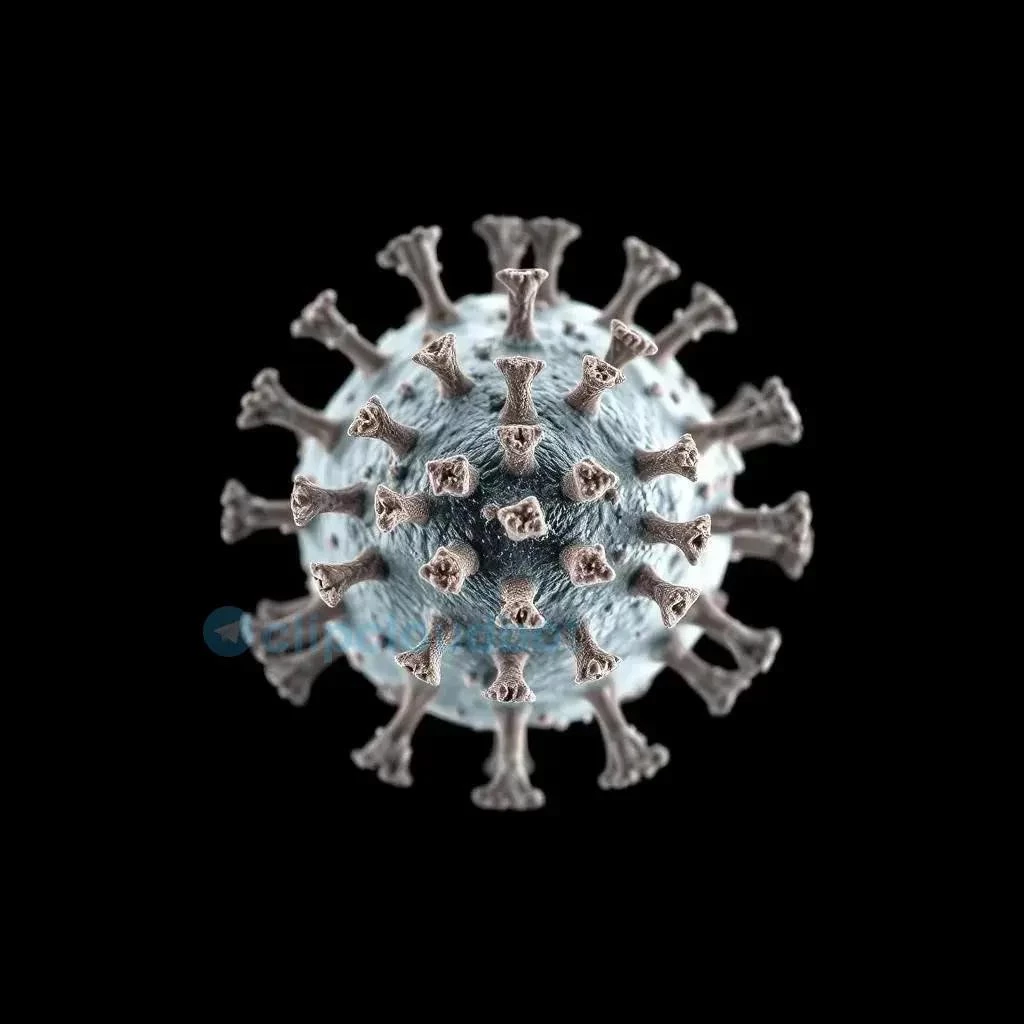What is RSV?
RSV, short for respiratory syncytial virus, is a common respiratory virus that typically causes mild, cold-like symptoms. It’s so widespread that most children have been infected with RSV at least once by the time they turn two. While generally mild, RSV can sometimes lead to more serious respiratory illnesses, especially in infants, young children, older adults, and those with weakened immune systems.
RSV is a highly contagious virus belonging to the Paramyxoviridae family. It primarily infects the lungs and airways, leading to inflammation and difficulty breathing. The virus is seasonal, typically circulating during the fall and winter months in most regions. Understanding the nature of RSV is crucial for effective prevention and management.
RSV Symptoms and Complications
RSV symptoms often resemble those of a common cold and typically appear in stages, not all at once. The initial signs of RSV infection usually develop within four to six days after exposure to the virus. In infants and young children, early symptoms might be subtle, such as decreased appetite and a runny nose.
Common Symptoms
- Runny nose: This is often one of the first symptoms to appear.
- Cough: Initially dry, the cough can become wet and persistent.
- Sneezing: Similar to a common cold, sneezing is frequently observed.
- Fever: While not always present, fever can occur, especially in younger children.
- Wheezing: A whistling sound during breathing, indicating airway inflammation.
- Decreased appetite: This is a common symptom, particularly in infants.
- Irritability: Young children might become more fussy and irritable than usual.
Symptoms in Infants
In infants younger than six months, RSV can present with more specific symptoms, which require close monitoring:
- Difficulty breathing: This can manifest as rapid breathing, labored breathing, or flaring of the nostrils.
- Poor feeding: Infants may struggle to feed due to breathing difficulties.
- Lethargy: Unusual sleepiness or unresponsiveness.
- Bluish skin color (cyanosis): This is a serious sign indicating low oxygen levels and requires immediate medical attention.
Complications
While most RSV infections resolve on their own within a week or two, some individuals, especially those in high-risk groups, can develop more severe complications. These complications can include:
- Bronchiolitis: Inflammation of the small airways in the lungs, leading to difficulty breathing and wheezing.
- Pneumonia: Infection of the lungs, which can be serious, especially in infants and older adults.
- Apnea: Pauses in breathing, which can be life-threatening in infants.
- Respiratory failure: The lungs are unable to provide enough oxygen to the body, requiring medical intervention.
- Recurrent wheezing: Some children who have had severe RSV infections may experience recurrent wheezing or develop asthma later in life.
- Ear infections: RSV can sometimes lead to secondary bacterial infections in the ears.
It’s important to note that the severity of RSV symptoms can vary significantly. While many individuals experience mild, cold-like symptoms, others, particularly those in high-risk groups, can develop serious complications. Seeking medical attention if you or your child experiences difficulty breathing, high fever, or persistent symptoms is crucial.
How RSV Spreads
RSV is highly contagious and spreads easily from person to person, primarily through close contact and respiratory droplets. Understanding how RSV transmits is crucial for implementing effective preventive measures and protecting vulnerable individuals.
Direct Contact
Direct physical contact with an infected person is a common mode of transmission. This includes:
- Kissing: Kissing an infected person, especially on the face, can transmit the virus.
- Shaking hands: If an infected person coughs or sneezes into their hand and then shakes your hand, you can become infected by touching your face, eyes, or nose.
- Sharing personal items: Sharing utensils, cups, or toys with an infected person can spread the virus.
Respiratory Droplets
RSV can also spread through respiratory droplets produced when an infected person coughs or sneezes. These droplets can:
- Land in the eyes, nose, or mouth: If you are in close proximity to an infected person who coughs or sneezes, the virus-containing droplets can directly enter your respiratory system.
- Contaminate surfaces: Droplets can land on surfaces like doorknobs, tables, and toys. Touching these contaminated surfaces and then touching your face can lead to infection.
Incubation Period
The incubation period, the time between exposure to the virus and the onset of symptoms, is typically four to six days. During this period, an infected person may be contagious without showing any symptoms.
Contagious Period
People infected with RSV are generally contagious for three to eight days. However, some infants and individuals with weakened immune systems can continue to shed the virus for up to four weeks, even after their symptoms have resolved.
Preventing the Spread of RSV
Several measures can help prevent the spread of RSV:
- Frequent handwashing: Wash your hands thoroughly with soap and water for at least 20 seconds, especially after coughing, sneezing, or touching surfaces in public areas.
- Avoid close contact: Try to avoid close contact with people who are sick.
- Cover coughs and sneezes: Cover your mouth and nose with a tissue or your elbow when you cough or sneeze.
- Clean and disinfect surfaces: Regularly clean and disinfect frequently touched surfaces, such as doorknobs, toys, and countertops.
- Stay home if you are sick: If you are experiencing RSV symptoms, stay home to avoid spreading the virus to others.
- Limit exposure to infants and high-risk individuals: If you are sick, avoid close contact with infants, older adults, and individuals with weakened immune systems.
By understanding how RSV spreads and taking appropriate preventive measures, we can significantly reduce the risk of infection and protect vulnerable populations from this common respiratory virus.
Treatment and Prevention of RSV
While there is no specific antiviral treatment for RSV, managing symptoms and providing supportive care are crucial for recovery. Prevention plays a significant role in protecting vulnerable populations from severe RSV infections. This section outlines treatment options and preventive measures for RSV.
Treatment
Most RSV infections resolve on their own within one to two weeks with supportive care. Treatment focuses on alleviating symptoms and ensuring adequate hydration and respiratory support. Common treatment strategies include:
- Saline nasal drops or sprays: These can help clear nasal congestion and improve breathing, especially in infants.
- Cool-mist humidifier: Adding moisture to the air can help soothe irritated airways and ease breathing difficulties.
- Plenty of fluids: Staying hydrated is essential to prevent dehydration, especially with fever and respiratory illness.
- Rest: Adequate rest helps the body fight off infection.
Hospitalization: In severe cases, particularly in infants, young children, and individuals with underlying health conditions, hospitalization may be necessary to provide respiratory support, including oxygen therapy and intravenous fluids.
Prevention
Preventing RSV infection is crucial, especially for high-risk individuals. Several preventive measures are available:
- Palivizumab (Synagis): This monoclonal antibody is a preventive medication given monthly injections during RSV season to protect high-risk infants, such as premature babies and those with certain heart or lung conditions. It helps prevent serious RSV complications but doesn’t treat existing infections.
- Nirsevimab (Beyfortus): This recently approved monoclonal antibody offers a single injection to protect all infants throughout their first RSV season, including healthy full-term babies.
- Hand hygiene: Frequent and thorough handwashing with soap and water for at least 20 seconds is essential.
- Respiratory hygiene: Covering coughs and sneezes with a tissue or elbow helps prevent the spread of respiratory droplets.
- Cleaning and disinfecting: Regularly cleaning and disinfecting frequently touched surfaces can help reduce the spread of the virus.
- Avoiding close contact with sick individuals: Staying away from people with respiratory illnesses can minimize the risk of exposure.
- Staying home when sick: If you have respiratory symptoms, stay home to avoid infecting others.
By practicing good hygiene, following preventive measures, and seeking appropriate medical care when necessary, we can effectively manage RSV infections and protect vulnerable populations from serious complications.






